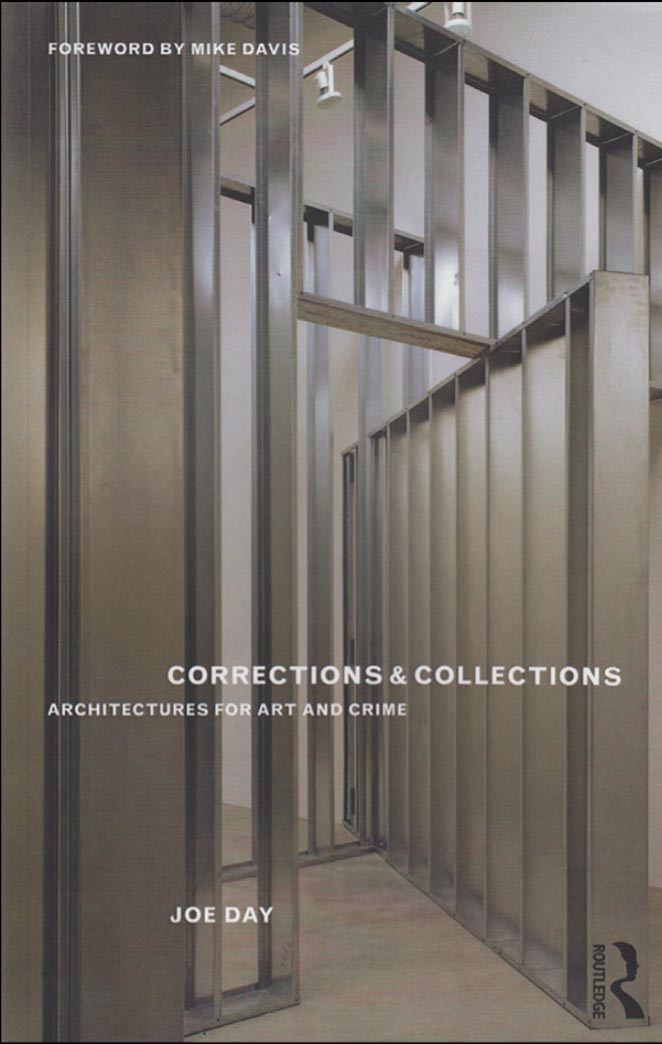Corrections & Collections
Joe Day
Foreword by Mike Davis
Synopsis
The United States holds over two million inmates in its prisons and jails, and hosts over two million daily visits to museums — in both, more than a ten-fold increase over the last fifty years. CORRECTIONS AND COLLECTIONS examines how architectures of exhibition and discipline now dominate the American landscape, the ways in which the two typologies complement one another, and why we’ve become a society of more and more extreme freedoms and constraints.
Author Joe Day shows that the surging demand for both museums and prisons has spurred architects to gamble on new design possibilities and to experiment with their scale and distribution through US cities. Day charts a cross-pollination between these building types, beginning with an unlikely convergence in Minimal- ism, and escalating through a wealth of diverse millennial holding spaces. CORRECTIONS AND COLLECTIONS surveys our many new architectures for the beautiful and the damned.
Events
Thursday, December 5th, 6:30pm :: Book Talk with Mimi Zeiger at Hennessey + Ingalls / Santa Monica
Monday, October 28th, 7pm :: Book Launch at SCI-Arc Library with Director Eric Owen Moss
Video Clip
Reviews
Architectural Review / Raymund Ryan
Los Angeles Times / Christopher Hawthorne
John Southern, for Archinect
Interview with Frances Anderton on KCRW’s DnA Mike Sonksen, for KCET
A synopsis by the author
Los Angeles
The Architecture of Four Ecologies
Reyner Banham
Foreword by Joe Day
Synopsis
Reyner Banham examined the built environment of Los Angeles in a way no architectural historian before him had done, looking with fresh eyes at its manifestations of popular taste and industrial ingenuity, as well as its more traditional modes of residential and commercial building. His construct of “four ecologies” examined the ways Angelenos relate to the beach, the freeways, the flatlands, and the foothills. Banham delighted in this mobile city and identified it as an exemplar of the posturban future. In a spectacular new foreword, architect and scholar Joe Day explores how the structure of Los Angeles, the concept of “ecology,” and the relevance of Banham’s ideas have changed over the past thirty five years.



